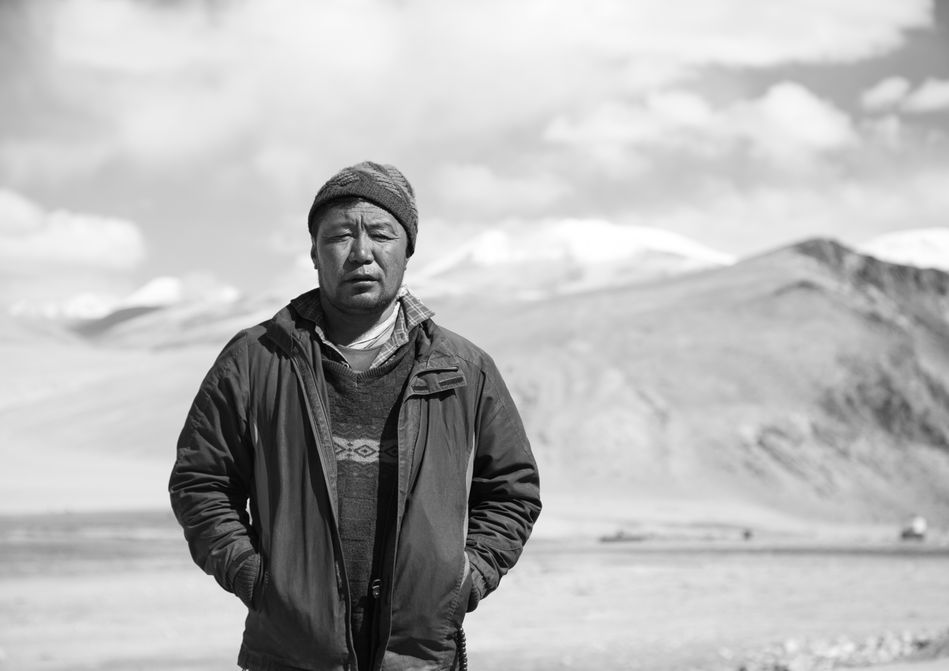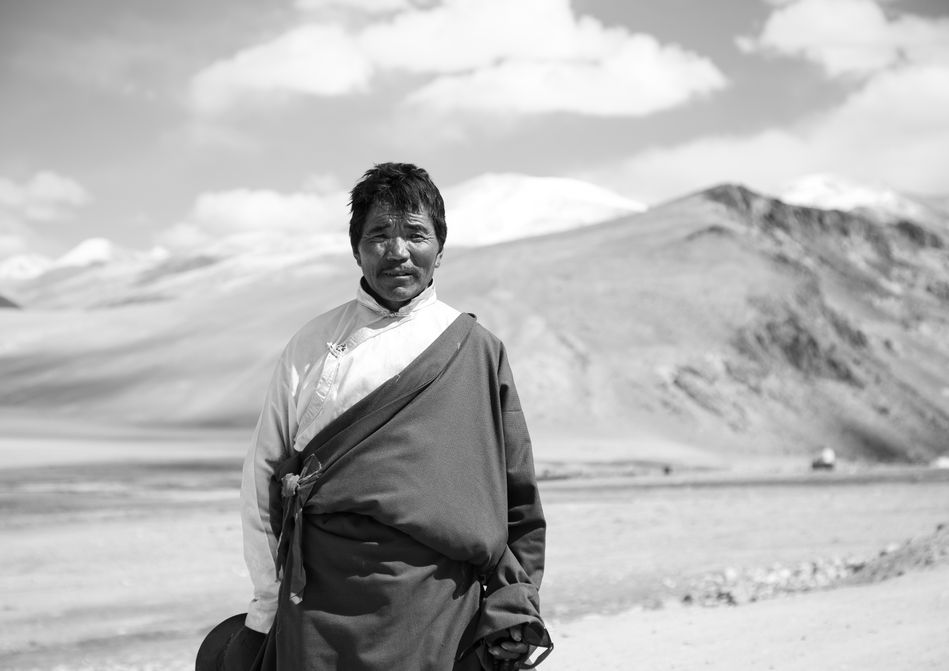
LEOPARDS, WOLVES AND OTHER FOUL THINGS
The Tibetan Plateau is often referred to as the roof of the world. One can’t quite grasp the accuracy of this name until they see the snow-capped Himalayas disappearing amongst swathes of stark white clouds. The Changpa Nomads have called this dusty plateau home for over a millennium.
These nomads’ lives revolve around their goats and yaks. The yaks they keep for wool, milk and occasionally meat, but their pashmina goats’ fur is what keeps the nomads in such an unyieldingly brutal environment. The fur makes pashmina, a material well sought after in the neighbouring Kashmir Valley. There it is made into the shawls, scarves and rugs for which the region is renowned. Since the nomads began raising their herds the only adversity facing the Changpa had been the wolves and snow leopards that stalk through the hills and mountain gullies. Striking at night, they would sometimes take up to five goats at a time. However, a new threat is looming, one that doesn’t threaten only a handful of goats at a time, nor one that can be deterred by the watchful eye of Tibetan Mastiffs.
The Changpa make their home above 4,500m, where water is scarce. For them the streams and springs that flow down from the glaciers as they melt have been the very lifeblood of their way of life. The Himalayan Glaciers that provide their water, year by year have begun to disappear. Without the Glaciers, this would mean the end for the Changpa.
Tsering Lhoma barely stands over 5 foot, she is 72, has 6 children and 100 goats. Like her parents before her she too is a nomad. She moves with the seasons, as it warms, she heads higher into the mountains. As it grows colder, she moves further down to wait out the winter snow.
Her day is spent leading her goats, by herding them up into the mountains she keeps them healthy and allows them to feed from greener pastures.
The Changpa are staunch Buddhist practitioners, as Tsering walks she threads her prayer beads through her leathery hands. While traversing the sullen slopes, watching her footing upon the thick sheet of slate that covers her path, she chants “Om mane padme hum” a popular Buddhist mantra. Usually it is repeated in a monotone, tone deaf flow. Practitioners try to chant it as many times as they can, believing each recital brings good karma.
Tsering however sings it without rush or hurry. It’s quiet, not for performance or praise but for herself and her goats. As the day moves on, she will stop and sit, resting while the goats continue on. Taking the same path through the hills everyday they now naturally know where to go. Tsering looks back on the nomad settlement, their tents now tiny black and white specks in the distance.

Back around the nomad camp, the crisp mountain air is humming with chants being played over speakers that stand outside a small brick building. A puja is being held, for Buddhists it is a time for worship and devotional attention. It is during the Puja that monks come to deliver teachings to the nomads, who in their isolation are bereft of access to monks to cultivate and reinforce their faith. As they sit and chant, butter tea is brought around for worshippers, the creamy brew warming the frost-bitten lips of those in prayer.
It is here that Rapgol Tsultim, born in Tibet before later moving to India to escape persecution, voiced his concerns for the future of the Changpa. Rapgol, like many of his fellow nomads, was born into the nomad life. He is a nomad because his father and his fathers’ father were nomads before him. He has led his flocks around the mountains of Ladakh for over fifty years.
“With the glacier there is big change, thirty years ago the glaciers would melt very slowly. Now they melt very fast.”
Each year the glaciers reform smaller and smaller. If the streams and springs that run down from the glaciers are the lifeblood of the Changpa, then the glaciers are the beating heart of their epoch-enduring way of life.
“Our drinking water and spring water is from the glacier, as the glaciers get smaller and smaller, we have water shortages. Our main source of water is from the glaciers.”
Rapgol wasn’t the only Changpa to be aware of what the shrinking glaciers foreshadowed, Sonam Wangchuk, Jigmet Lodoe and Pema Tsering have all watched as the glaciers, year by year have slowly begun to disappear.

For the nomads they have already seen fundamental parts of their lifestyle disappear due to the shortage of water. Rapgol explained how they are no longer able to grow crops as they once did.
“Before 20 years ago we used to farm barley and vegetables, back then we had plenty of water for irrigation. These days the farm is not possible.”
The empty irrigation ducts, like a skeleton, lay unused across the dust-strewn plain. The fields that they encompass, once green and full of life are now dead and empty. Only the remains of goats that didn’t make it back before sunset fill the empty space.
Sparked by the Anthropocene, our effect on our planet has already begun to affect those who are most reliant on the land, the indigenous peoples of the world, who have for millennia lived in harmony with their environment. As the seas rise and glaciers fall, they are and will continue to be the early casualties before the greater onslaught. The way of living we all need to learn from to revert the climate crisis is slowly slipping away. The greatest fear now is that we won’t recognise how vital the knowledge of people like the Changpa is before it disappears.
For now, the Changpa have little option but to rise each day and hope that when they lead their goats into the hills that the springs and streams are still flowing. When the glaciers finally disappear, the hills and mountains of the Himalaya will silently mourn the empty air, bereft of Tsering’s song.

















